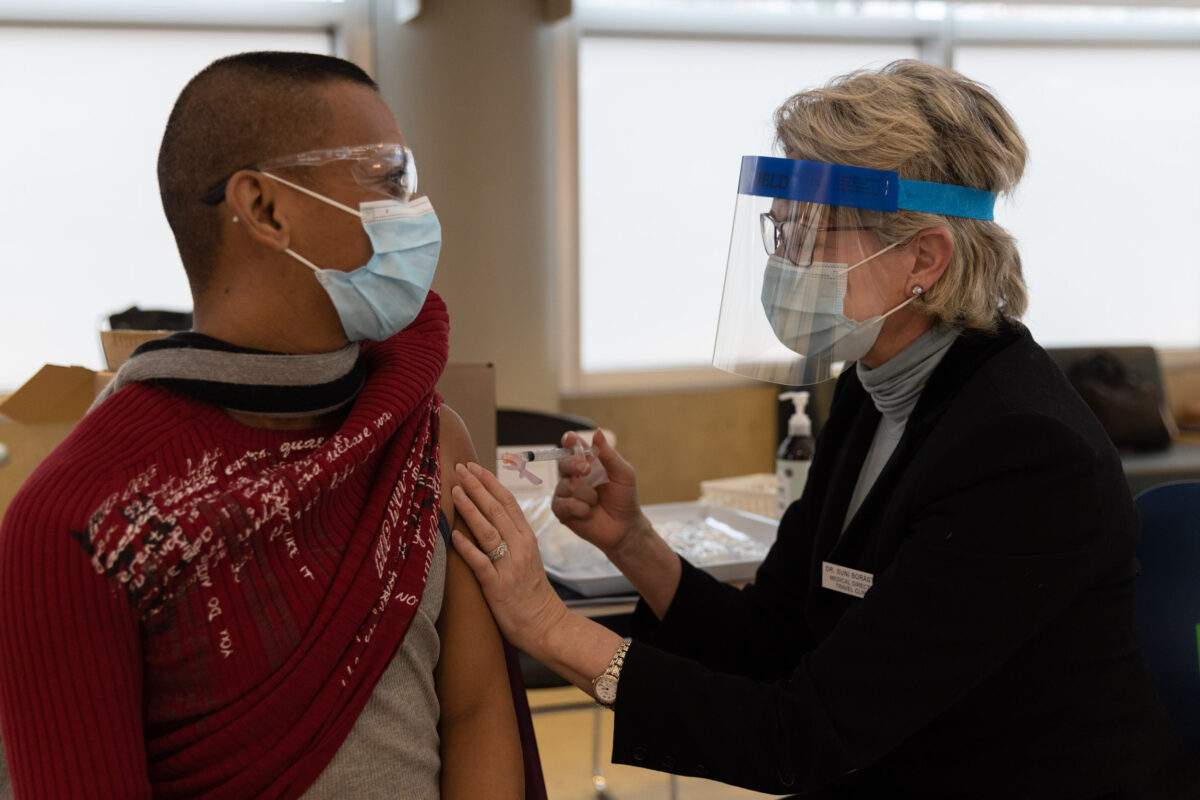Wisconsin pharmacist Steven Brandenburg was arrested for sabotaging more than 500 of Moderna’s COVID-19 vaccine by leaving them out at room temperature overnight on Dec. 24 and Dec. 25, 2020. His crime left people scratching their heads. Why would anyone do such a thing? According to court documents, Brandenburg admitted to police that he tried to spoil the vaccine because he believed that it would mutate the recipients’ DNA.
Health experts have extensively debunked this conspiracy theory, but it has persisted, possibly because, like all good conspiracy theories, there’s a grain of truth at its core. Gene therapy products that can alter your DNA have been on the market for several years. However, none of the vaccines under development have the right tools to change your DNA.
James Watson, Francis Crick, and Rosalyn Franklin discovered the structure of the DNA double helix in 1953. That discovery confirmed and clarified the function of DNA as the carrier of genomic information, and Crick coined the phrase the central dogma to describe how information flows from DNA to RNA to protein. Genetic code is transferred to RNA through the process of transcription, and from RNA to protein, by translation.
Transcription and translation are each carried out by RNA polymerase and the ribosome. These large molecules, or enzymes, are like tiny machines that do work inside the cell.
The genome is like a set of encyclopedias. To make a protein from an individual encyclopedia entry—a gene—it must be copied out into messenger RNA (mRNA) with some additional notes like “make this into protein,” “start here,” “stop here,” and “when you’re done cut here and here.” Transcription happens in the cell nucleus, where the genomic DNA is. Once they are finished, mRNAs are transported into the watery space outside of the nucleus called the cytosol. There, it gets picked up by the ribosome, which reads the RNA code and assembles the amino acids into a protein.
RNAs also have other important functions that don’t involve being translated into protein, like controlling how many copies of genes are made.
The flow of information is generally one-way only, but there are exceptions. Information from RNA can be read back into DNA by a process called reverse transcription. It requires an enzyme called reverse transcriptase which is found in some viruses, including HIV, the virus that causes AIDS. These viruses are known as retroviruses, because instead of a DNA genome, they have an RNA genome. When they invade cells, they use reverse transcriptase to convert their RNA into DNA and then use other viral proteins to recognize host DNA sequences and splice their DNA into them. The cellular machinery to convert mRNAs back into DNA and splice them into genomic DNA does not exist in human cells. And the mRNA vaccine doesn’t bring its own “equipment.” It relies only on what is available in human cells—RNA polymerase and ribosomes, which have forward gears only.
The Pfizer/BioNTech and Moderna COVID-19 vaccines use mRNA to build copies of the coronavirus spike protein inside human cells. Since these are only pieces of the virus, they can’t self replicate or spread on their own. They migrate out of the cell and are detected as foreign proteins by the immune system, which makes antibodies against them. These antibodies then also attack spike protein of live coronavirus, deactivating it and allowing the immune system to clean up the remains. Because RNA is inherently very unstable, the mRNAs delivered by the vaccines are degraded quickly, and would not be expected to continue producing spike protein any longer than necessary to generate an immune response. In fact, it’s a bigger problem getting them to last long enough.
On the other hand, viral infections themselves have the potential to alter human DNA, especially retroviruses. The human genome contains many relics of viruses that integrated into our genome in our evolutionary past and became a permanent part of our biology. Although it’s not impossible that the new coronavirus would integrate into its host’s DNA, it’s unlikely because it is not a retrovirus and doesn’t come packaged with tools that allow it to do that. The likelihood of either the vaccine or viral mRNA somehow making a change to a host cell’s genomic DNA is astronomically remote. It would depend on some kind of weird genetic accident, such as a collision with a retrovirus or haywire regulatory RNAs. Even if such a thing were to occur, our bodies have multiple lines of defense against genetic changes and mutations. Cells have DNA proofreading mechanisms that can correct an error on the fly. And our immune systems also continuously seek out and destroy mutant cells. (In fact, one of the reasons we get cancer is that something goes wrong with this process.)
For all of these reasons, changes to your DNA from an mRNA vaccine is not a concern. Vaccines can have risks, but this is not one of them. The vaccine manufacturers and regulatory agencies have completed early trials and are continuing to monitor potential adverse effects. Because of the scale of the global COVID-19 vaccination effort, there has been increased transparency around the safety of the vaccine. Your health care provider will have the best and most relevant information about real world risks.
